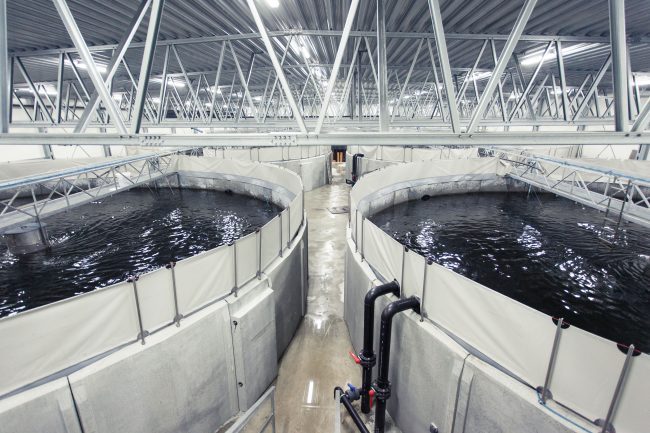The struggling Danish salmon land-based farming sector managed to reduce its stubborn deficit last year, latest accounts for 2017 show.
Trading in the red since its inception in early 2011 – and dipping deep into 28m Danish kroner debt in 2015 – the fledgling market has been buoyed by a new optimism following a hike in salmon prices.
The new positivity caused major shareholder Ole Hatlebakk to suggest in April last year that there could be a small profit by 2017’s end.
A net gain has failed to materialise, however, with the end of year result showing a net deficit of 3.3m Danish kroner.
The slashing of the deficit is in part down to the major players pouring money into the sector, with the belief among shareholders the sector is on the verge of a breakthrough continuing to hold.
According to the Food Watcher website, the North Jutland company had to injection capital throughout 2016 in order to keep its operations afloat.
Additional funds were also poured in during 2017 to cover, among other things, the operating deficit.
Lack of experience of large saltwater fish production and on land and playing technological catch-up are cited as the main reason for the year-on-year losses to date.
But Chairman of the Danish Salmon Board, Erik Munk Poulsen, still sees a brighter future thanks to advances in the sector’s technological development and research – and so do shareholders.
They recently voted for an extra 4m million Danish kroner cash injection for the remainder of the year if required, Poulsen said.
“We have had some huge operational losses but the [sector] is beginning to succeed for us now because we have gotten to grips with our technology and we better understand the behaviour of the fish we farm,” he said.
He added: “It’s a code we feel we are breaking. At the same time, the global interest in our own technology has increased. Therefore, shareholders are also optimistic,” he says.
Poulsen said he hoped 2019 could be the year red turns to black for land-based Danish salmon production, though he added: “I can not guarantee it”.

